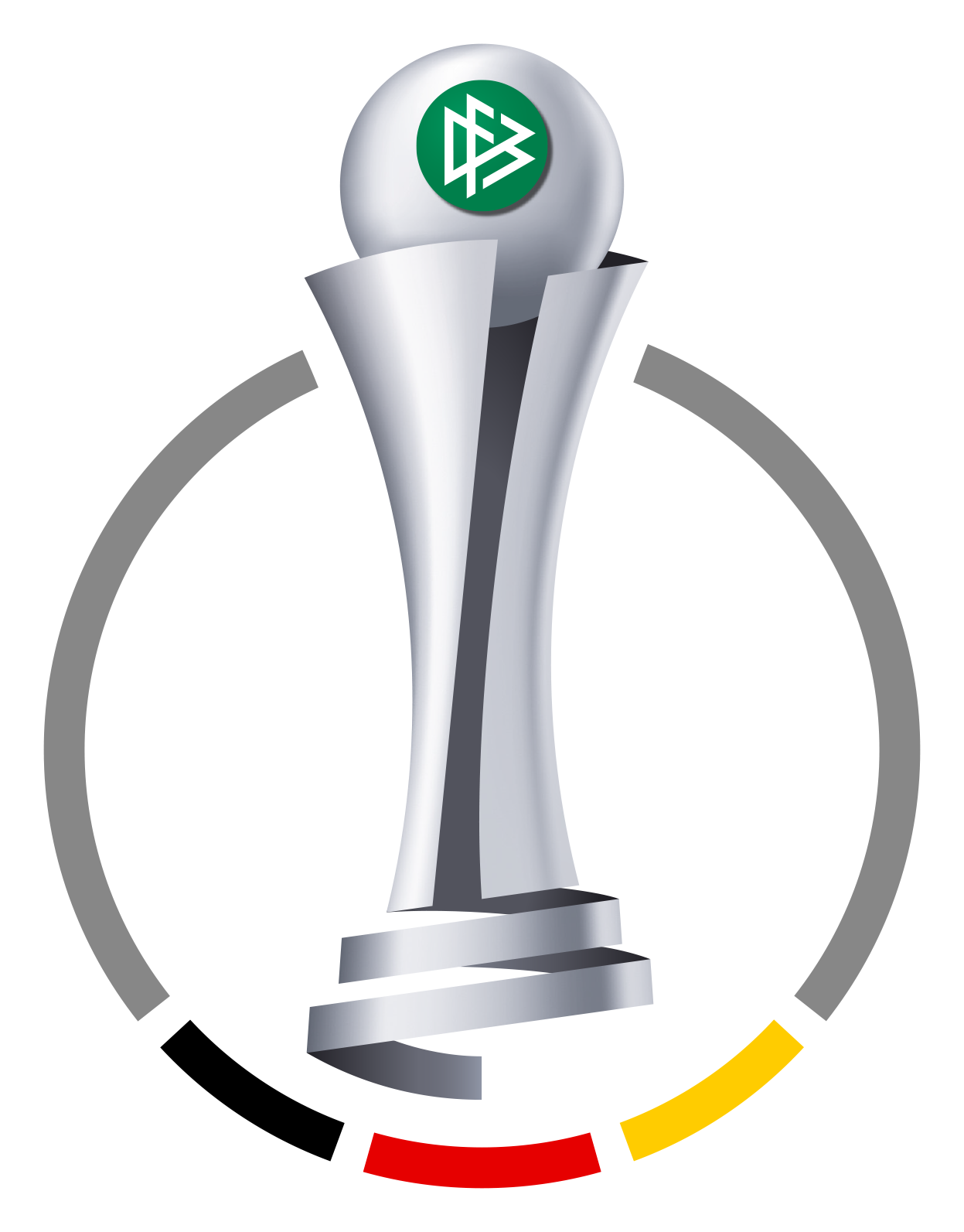.jpg%3F1716668896)
Men
DFB Pokal
Competition Information
Everything to know about the 2024/25 DFB-Pokal season
As part of the allocation of rights for the 2022/23 to 2025/26 seasons, the kick-off times and broadcast rights in the DFB-Pokal have changed. The allocation of prize money within the men's cup competition has also been changed ahead of the 2024/25 season. DFB.de has summarised the most important information ahead of the new cup campaign in our FAQ.
The majority of the first-round ties will be played between 16th-18th August. Due to their participation in the DFL-Supercup, Bayer 04 Leverkusen and VfB Stuttgart will play their opening-round fixtures on 27th/28th August instead. The second round will be played on 29th/30th October. Like last year, the round of 16 has been scheduled for the first half of the season. Those ties will be on 3rd/4th December. The quarter-finals will be earlier than normal, played across two different weeks on 4th/5th and 25th/26th February 2025, meaning there will be one tie per evening. The semi-finals will be on 1st/2nd April 2025, while the final in Berlin takes place on 24th May 2025.
Football fans in Germany will be familiar with the cup draw procedure. The draws for each round in the DFB-Pokal are conducted under legal supervision. A week or two following each draw, the DFB will announce the exact timings for each fixture on DFB.de and on the association's social-media accounts. Fans will then find out which matches will be played when, along with which matches will be broadcast free in Germany on ARD and ZDF, and which will be shown via paid subscription on Sky.
The distribution formula for the 2024/25 Men's DFB-Pokal was decided at a joint meeting of the Supervisory Board and a shareholders' meeting of the DFB GmbH & Co. KG. The distribution is roughly on par with the previous season. A total of €67 million will be distributed from the first round to the semi-finals, with €7.2 million set to be allocated for reaching the DFB-Pokal final. The prize money is set to be distributed as follows:
- For qualifying for the first round: €209,453
- For qualifying for the second round: €418,906
- For qualifying for the round of 16: €837,813
- For qualifying for the quarter-finals: €1,675,625
- For qualifying for the semi-finals: €3,351,250
- The runners-up will receive €2,880,000
- The winners will receive €4,320,000
Schedule
2024/2025 fixture calendar
| First-round draw: | 1st June 2024 |
| First round: | 16th–19th August and 27th/28th August 2024 |
| Second round: | 29th/30th October 2024 |
| Round of 16: | 3rd/4th December 2024 |
| Quarter-finals: | 4th/5th and 25th/26th February 2025 |
| Semi-finals: | 1st/2nd April 2025 |
| Final in Berlin: | 24th May 2025 |
Format
A total of 64 teams take part in the opening round of the DFB-Pokal, which includes the 36 teams from the Bundesliga and 2. Bundesliga, the 21 regional association cup winners, and the top four finishers of the 3. Liga.
The remaining three slots are awarded to the three regional associations with the most men's teams. Each association can provide a maximum of one additional participant. The decision as to which three associations can enter an additional team is made by the DFB Match Committee based on the DFB's current membership statistics. Each regional association must be represented by at least one amateur team.
Reserve teams are not eligible to participate in the DFB-Pokal. Additionally, two teams from the same club/limited company cannot take part in the competition. In the event that a reserve team or a team from a club that has already had another side qualify for the DFB-Pokal wins one of the regional cup competitions, the next-placed eligible team from the regional association cup will take their place in the DFB-Pokal.
In the event that a reserve team is amongst the top four finishers in the 3. Liga, or one of the top four sides in the 3. Liga has already qualified for the DFB-Pokal by virtue of winning a regional association cup competition, the next-placed eligible team in the 3. Liga table or the next-placed eligible finisher in the regional cup competition will replace them.
Spielgemeinschaften (two clubs that compete under a shared name) are not eligible to take part in the DFB-Pokal. A prerequisite for participation is that a declaration must be submitted when registering for the DFB-Pokal, stating that a commercial-exclusive stadium is available for live television broadcasts. The stadium does not have to be located at the headquarters of the club or its subsidiary. If the club or its subsidiary aren't the owners, a declaration stating this must be submitted by the owner.
The first-round draw features two pots, with teams from the previous season’s top 32 sides across the Bundesliga and 2. Bundesliga seeded, while sides that finished 15th to 18th join the lower-league clubs in the unseeded pot.
During the draw, a team is first drawn from the unseeded pot, followed by a team from the Bundesliga/2. Bundesliga pot, with the side drawn first playing at home. The winners of each tie will qualify for the second round.
The second-round draw features two pots, with any teams from the Bundesliga and 2. Bundesliga seeded and the remaining lower-league sides in the unseeded pot. During the draw, a team is first drawn from the unseeded pot, followed by a team from the Bundesliga/2. Bundesliga pot. Once there are no more balls left in one of the pots, the remaining ties will be drawn from the same pot. The team that is drawn first will play at home. The winners of each tie will qualify for the next round.
The ties will be drawn from one pot, with the team that is drawn first set to play at home. If a Bundesliga or 2. Bundesliga side is drawn against a lower-league side, the latter will be given home advantage. The winners of each tie will qualify for the next round.
The two winners of the semi-finals will contest the final at a location determined by the DFB.
If there is no winner after 90 minutes, 2x15 minutes of extra time will be played. If there is no winner after extra time, the match will go to a penalty shootout.
A player that is shown their fifth yellow card of an ongoing DFB-Pokal campaign will be suspended for one match. Suspensions resulting from red card offences will carry over into the following DFB-Pokal season. If a player is shown a red card for two bookable offences, he will be suspended for his team's next match in the competition.
DFB-Pokal style
The DFB-Pokal was given a new brand identity for the 2016/17 season, which included a new logo. The image of the trophy features a powerful, modern design. The edges of the coveted cup are drawn in curved lines which are reminiscent of the gold confetti that showers the cup winners during the medal ceremony.
A ZIP file containing the current Men's DFB-Pokal logo can be found via the link below. These files should only be used for editorial purposes. Any use of the logo for commercial or advertising purposes must first be cleared with the DFB.
The iconic golden trophy we know so well today was first lifted in celebration by Dortmund's Alfred 'Aki' Schmidt in 1965. Back then, the cup final wasn't yet held in Berlin, but in Hanover instead. Back then, as it is now, winning the DFB-Pokal was one of the biggest achievements in German football.
Following the war, the German Football Association had initially continued to award the so-called Tschammer-Pokal to the cup winners. By 1964, it was decided that it was time to do away with this remnant from the Nazi era. Then DFB President Dr. Peco Bauwens commissioned Cologne-based goldsmith Wilhelm Nagel to construct a trophy that would meet the DFB's cultural standards.











